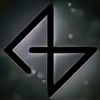HOME | DD
 Byron1c — Blender Cycles Test Sheet - Removing Fireflies
Byron1c — Blender Cycles Test Sheet - Removing Fireflies

Published: 2014-07-11 00:32:07 +0000 UTC; Views: 1201; Favourites: 6; Downloads: 42
Redirect to original
Description
Download the image to see it in full size and without any compression. WARNING - VERY LARGE IMAGE: 51 mb Download!Hopefully most of the image is fairly self explanatory. I was trying to work out the best settings for removing "fireflies" from Blender Cycles renders, especially with volumetrics and reflections. Looking at tutorials it seems people use all sorts of settings for Clamp Indirect, but usually very low settings (0.5 - 5 seems to be common).
My experimentation found that these settings did a great job of removing extra bright pixels, BUT, I lost a lot of subtle reflections and flares of light.
This test sheet confirms what I've suspected - the HIGHER the value Clamp Indirect is set to, the LESS fireflies are removed, and those subtle reflections are preserved. To put it another way, if you want to remove more fireflies (and the resulting sub reflections), then use a LOWER value above zero.
It is very important to be aware that these subtle reflections etc. I've mentioned sometimes only appear at the higher Sample values. What starts as / seems to be a random firefly when rendered at a given Sample value, can actually be the start of a subtle reflection at a higher Sample value.
So, Clamp Indirect's effective range seems to be:
0 = No Clamp;
Low Values > 0 = LOTS of Clamp;
High Values < 256 = Small amount of Clamp
The way I am using this image, is to scroll across the top and look at the reflections at the desired sample rate, then scroll down the images until I find the best Clamp Indirect setting that balances between preserving highlights and minimising fireflies.
**See the reflection in the lower right hand area of the ball, and the resulting flare of reflected light along the ground, from that bright spot. That area is the one that most significantly changes on each image**
NOTES:
* These images and testing are done with 640x480 and maximum 4800 samples. I suspect there could be more differences using the higher values for the resolution, and larger Sample values.
* I used GIMP's Difference layer to compare the 100 Sample images to each other, and 4800 Sample images to each other, to see what changed between images.
* The higher Sample value images showed more differences at higher clamp values, than what the lower Sample value images did. ie. Higher values for Clamp can be used for fine control when using high Sample values
* I kept the download image as PNG to preserve every pixel for your own comparisons, rather than compressing it with JPG
* DO NOT REDISTRIBUTE OR EDIT. Please link to this page if you wish to. I think the information above is important to explain the image.
EDIT: Just minor wording changes in the notes for clarification
Related content
Comments: 7

I agree with AdmiralThornton! One of my frustrations with all the tutorials is that the tutorial writer, in an effort to be focused and brief, just tells you what values to use (which also typically only apply at his/her scale factor, I've noticed). Finally here we see a full treatment of a subject! I have a simple gold lettering company logo that was looking great on a plate of green glass until I added velvet curtains behind -- fireflies went nuts! Found somewhere that using Nodes for the velvet and adding a Light Ray input to isolate out the bounced rays vastly cut out the fireflies. If that sounds of interest, I can pull some screenshots of the effects and add back here?
👍: 0 ⏩: 1

Cheers 
I just read something about using that node trick too, though I haven't tried it yet. Im interested in seeing how effective it is.
It was my hope that this would get some discussion / clarification by others, and maybe some other tricks. You are more than welcome to add anything in here you think might be useful / helpful on the topic 
👍: 0 ⏩: 1

I may well do that if for no other reason than searching for Blender tutorials you know you saw once can be frustrating 
👍: 0 ⏩: 1

lol - no worries - I know what its like sometimes.... I worked out that that the render time alone for that test sheet was over 18 hours. Some things take time
👍: 0 ⏩: 0

Every Blender artist should favorite this...
I haven't done any serious rendering in quite some time (at least, just a little when Blender 1.5 was out) but I plan to refer back to this when I can get back to the rendering.
Thanks for the hard work you have put into this.
👍: 0 ⏩: 0



















